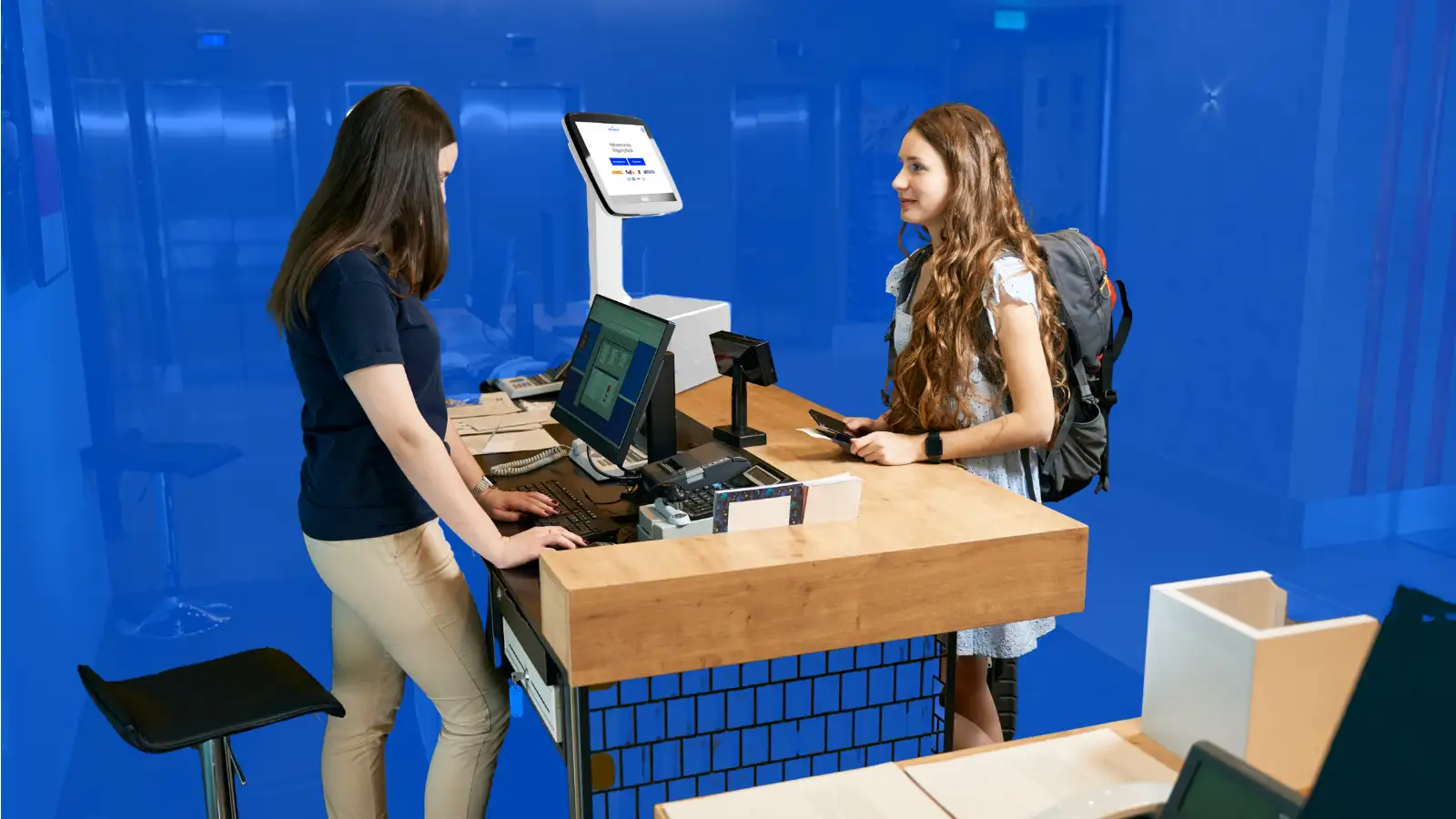September 20, 2025
·
3 min read

In today’s competitive market, gut feelings aren’t enough to justify an investment, especially one that impacts daily operations and customer experience. And while a shipping kiosk indeed promises faster service, reduced labor costs, and additional revenue streams, the real question is whether those benefits outweigh the costs.
By calculating your shipping kiosk ROI, you can move beyond guesswork and make a clear, evidence-based decision that aligns with your business goals and growth strategies.
Why ROI Matters for a Self-Service Shipping Kiosk
A shipping kiosk is more than a convenience, it’s a potential profit center. And like any investment, it should be evaluated for both its tangible and intangible returns. ROI gives you a measurable way to:
- Justify the investment to stakeholders or decision-makers.
- Compare multiple kiosk models or vendors.
- Identify how long it will take to break even.
- Forecast long-term profitability.
An ROI analysis helps assure you’re making the best business decisions.
Key ROI Factors to Consider

When calculating self-service shipping kiosk ROI, you’ll want to look beyond simple revenue numbers. The true value lies in a mix of cost savings, new revenue streams, and enhanced customer experience.
1. Initial Investment Costs
Include the purchase or lease cost of the kiosk, installation fees, software licensing, and any integration with existing systems.
2. Operating Costs
Factor in electricity, internet connectivity, maintenance, paper and label supplies, and software subscription fees.
3. Revenue from Transactions
Consider the per-shipment fees you’ll collect, whether that’s from customer usage fees, carrier commissions, or service surcharges.
4. Cost Savings
A kiosk can automate tasks that would otherwise require staff, saving significantly on labor costs. It can also reduce errors and speed up processing times, further improving efficiency.
5. Additional Foot Traffic & Cross-Sales
If the kiosk is placed in a retail store, it can attract new customers who may also make other purchases.
6. Customer Retention & Loyalty
Convenience builds loyalty. By offering 24/7 or extended-hour shipping services, you keep customers coming back. From an ROI perspective it’s a bit more challenging to quantify, yet extremely valuable.
How to Calculate Shipping Kiosk ROI
A basic ROI formula looks like this:
ROI (%) = [(Total Benefits – Total Costs) ÷ Total Costs] × 100
Example:
- Annual Benefits: $50,000 (transaction revenue + labor savings + added sales).
- Annual Costs: $25,000 (kiosk + operations).
- ROI = [(50,000 – 25,000) ÷ 25,000] × 100 = 100%
In this example, you’d be doubling your investment within the first year.
Using an ROI Calculator for Shipping Kiosks
Rather than crunching numbers manually, an ROI calculator tailored to shipping kiosks can streamline the process. A good calculator will:
- Let you enter fixed and variable costs.
- Factor in average transactions per day.
- Include carrier commission rates.
- Account for seasonal fluctuations in shipping volume.
- Provide break-even timelines and long-term projections.
By adjusting the inputs, you can see how changes in transaction volume, pricing, or kiosk costs will impact your bottom line.
Tips for Maximizing Your Shipping Kiosk ROI

1. Choose a High-Traffic Location
To ensure steady foot traffic and frequent transactions, place your kiosk where your target users already gather, such as retail stores, coworking spaces, or transit hubs.
2. Offer Multiple Carriers and Service Levels
Provide a mix of national, regional, and postal carriers, plus a range of speeds and prices to appeal to various customer needs.
3. Actively Promote the Kiosk
Use signage, email, and social media to raise awareness. Highlight convenience, speed, and specialized features to attract first-time and repeat users.
4. Monitor Analytics
Track carrier usage, peak hours, and drop-off points to fine-tune pricing, services, and customer flow.
5. Bundle Services
Offer packing supplies, label printing, and insurance to increase per-transaction revenue and customer convenience.
Bottom Line
When implemented strategically, a shipping kiosk can deliver measurable returns that extend far beyond direct transaction revenue. By placing it where demand is highest, offering services that match customer priorities, and continuously refining your operations with real data, you can turn a one-time investment into a profitable long-term growth engine.
Positive ROI is proof that your kiosk is helping your business work smarter, serve better, and grow faster.


